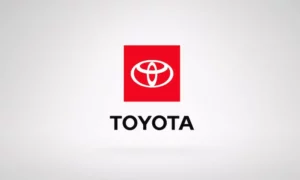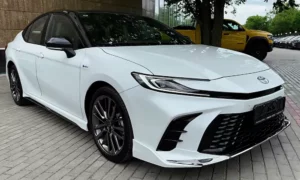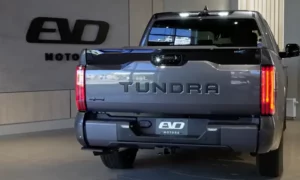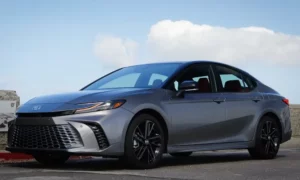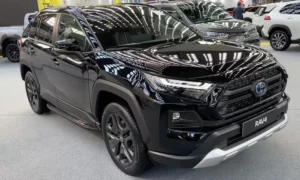Ever wondered where your Toyota Highlander was built? Toyota’s popular mid-size SUV has won over families with its reliability, comfort, and versatility—but its manufacturing story reveals Toyota’s global strategy and commitment to regional production.
The Toyota Highlander’s primary home is right here in the American Midwest, though the production story doesn’t end there. Let’s dive into the where, how, and why behind Highlander manufacturing.
Toyota Highlander Manufacturing: The Main Production Hub
The Toyota Highlander is primarily manufactured at Toyota Motor Manufacturing Indiana (TMMI) in Princeton, Indiana. This massive 950,000-square-foot facility serves as the exclusive North American production center for the Highlander and its variants.
TMMI isn’t a new operation—it’s been producing vehicles since 1996, originally focusing on the Tundra pickup truck before shifting toward SUV production. Today, the plant employs over 7,200 workers who build not just the Highlander but also the Grand Highlander and Lexus TX models.
If you’re driving a Highlander in North America, chances are extremely high it rolled off the assembly line in Indiana.
Inside Toyota’s Indiana Plant
The Princeton facility is impressive by any standard. The plant can produce more than 400,000 vehicles annually, with Highlanders making up roughly 150,000 units each year.
Production here is highly sophisticated, featuring:
- Six operational areas handling more than 4,000 unique parts for the Highlander
- Advanced robotics systems implemented after a $1.3 billion investment in 2017
- Specialized production lines for hybrid variants
- A dedicated pilot team that works on continuous improvements to the assembly process
What makes TMMI special is its ability to adapt. The plant seamlessly produces multiple models on the same production lines, including both conventional and hybrid Highlander variants.
The Grand Highlander Expansion
In 2023, Toyota invested an additional $803 million into TMMI specifically to produce the new Grand Highlander. This larger three-row variant required expanded production capabilities.
The investment included:
- New battery assembly lines for hybrid models
- Enhanced automation systems
- Additional workforce training
- Expanded production capacity
This significant investment underscores Toyota’s long-term commitment to manufacturing in Indiana and its belief in the continued success of the Highlander family of vehicles.
Global Toyota Highlander Production
While Indiana produces the majority of Highlanders worldwide, Toyota maintains a global manufacturing footprint for the model:
Japanese Production
In Japan, the Tahara Plant in Aichi Prefecture occasionally manufactures Highlanders for the domestic Japanese market and some Asian countries. However, this facility primarily focuses on luxury vehicles and hybrids, with Highlander production representing a smaller percentage of its output.
Chinese Manufacturing
For the Chinese and broader Asian markets, Toyota Motor Manufacturing China (TMMC) produces the Highlander—though it’s marketed as the “Kluger” in many Asian countries. Production facilities in Chengdu and Guangzhou handle approximately 80,000 units annually.
This localized manufacturing approach helps Toyota:
- Avoid import tariffs
- Meet China’s specific emissions regulations
- Reduce shipping costs
- Tailor vehicles to regional preferences
Comparing U.S. vs. International Highlander Production
Toyota’s approach to Highlander manufacturing differs based on region:
| Factor | TMMI (U.S.) | TMMC (China) |
|---|---|---|
| Primary Market | North America | China & Asia |
| Annual Output | ~150,000 units | ~80,000 units |
| Labor Approach | Higher wages with increased automation | Lower labor costs |
| Regulatory Focus | U.S. safety and emissions standards | Chinese EV mandates and content rules |
| Supply Chain | 75% U.S.-based suppliers | Primarily Asian suppliers |
This regional manufacturing strategy allows Toyota to balance efficiency with local market needs—a hallmark of their global approach.
U.S. Supply Chain Integration
The TMMI plant sources approximately 75% of its components from U.S.-based suppliers, creating a resilient and localized supply chain. Key suppliers include:
- Denso: Providing electronics components from facilities within 200 miles of Princeton
- Aisin Seiki: Supplying transmissions from nearby operations
This approach reduces transportation costs, minimizes supply chain disruptions, and supports the broader U.S. automotive manufacturing ecosystem.
Hybrid Highlander Manufacturing
The Highlander Hybrid requires specialized production capabilities, and TMMI serves as the exclusive North American producer of these eco-friendly variants.
The plant incorporates:
- Dedicated battery assembly areas
- Specialized training for technicians working on hybrid systems
- Enhanced quality control processes for electrical components
As demand for hybrid SUVs continues to grow, TMMI’s role in producing the Highlander Hybrid has become increasingly important to Toyota’s North American strategy.
The Future of Highlander Manufacturing
Toyota has made it clear that the Highlander’s manufacturing future lies primarily with TMMI. The facility’s recent investments position it to lead production for years to come, with several key developments on the horizon:
- Further expansion of hybrid production capabilities
- Continued advancement in automation and manufacturing efficiency
- Enhanced integration of the supply chain to reduce costs and environmental impact
- Potential for additional electrified variants as market demand evolves
Toyota’s goal for 40% of U.S. sales to be electrified by 2025 will likely mean further investment in TMMI’s capacity to produce hybrid and potentially plug-in versions of the Highlander.
Toyota’s U.S. Manufacturing Commitment
The Highlander’s production in Indiana reflects Toyota’s broader commitment to U.S. manufacturing. Beyond TMMI, Toyota operates multiple manufacturing facilities across the country, producing everything from sedans to pickup trucks.
This strategy allows Toyota to:
- Reduce exposure to currency fluctuations
- Minimize logistics costs for the North American market
- Respond quickly to changing consumer preferences
- Build goodwill with American consumers and policymakers
The Highlander serves as a flagship example of this approach, with its primary global production centered in America’s heartland.
Environmental Considerations in Highlander Manufacturing
TMMI has implemented numerous environmental initiatives to reduce the ecological footprint of Highlander production:
- Water recycling systems that save millions of gallons annually
- Energy-efficient lighting and climate control throughout the facility
- Waste reduction programs that divert materials from landfills
- On-site solar power generation
These efforts align with Toyota’s global environmental commitment while reducing operating costs for the facility.
The Economic Impact of Highlander Production
The Highlander’s manufacture generates significant economic benefits for Indiana and the broader Midwest:
- Over 7,200 direct jobs at competitive wages
- Thousands of additional jobs at supplier companies
- Substantial tax revenue for local communities
- Community investment through Toyota’s philanthropic programs
For every job created at TMMI, analysts estimate approximately 7 additional jobs are supported throughout the regional economy.
Quality Control in Highlander Manufacturing
Toyota’s renowned quality control processes are fully implemented at TMMI, ensuring consistency across all Highlanders regardless of their final destination:
- Every vehicle undergoes extensive testing before leaving the factory
- Random units are selected for additional inspection
- The National Highway Traffic Safety Administration conducts independent safety verifications
- Customer feedback is continuously integrated into the manufacturing process
This commitment to quality explains why the Highlander consistently ranks among the most reliable SUVs in its class.
Buying a U.S.-Made Highlander
If you’re specifically looking for an American-made Highlander, virtually all models sold in North America qualify. You can verify your vehicle’s manufacturing location by:
- Checking the VIN (Vehicle Identification Number)
- A VIN starting with “5TD” indicates U.S. manufacture
- A VIN starting with “JT” indicates Japanese manufacture
- Looking at the driver’s door jamb sticker, which lists the manufacturing location
- Asking your Toyota dealer for the vehicle’s build information
This transparency allows consumers to make informed choices about the origin of their vehicles.
The Princeton Experience Center
For those interested in seeing Highlander production firsthand, Toyota operates the Toyota Indiana Experience Center in Princeton, where visitors can learn about the manufacturing process and the facility’s history.
The center offers:
- Interactive exhibits about vehicle production
- Information about Toyota’s manufacturing philosophy
- Details about the economic and environmental impact of the facility
- Historical context about Toyota’s growth in Indiana
While actual plant tours are limited, the Experience Center provides valuable insights into how Highlanders are made.
So there you have it—the complete picture of where Toyota Highlanders come from. Whether rolling off the line in Indiana, Japan, or China, each Highlander represents Toyota’s global manufacturing expertise and commitment to quality that has made it one of America’s favorite family SUVs.



